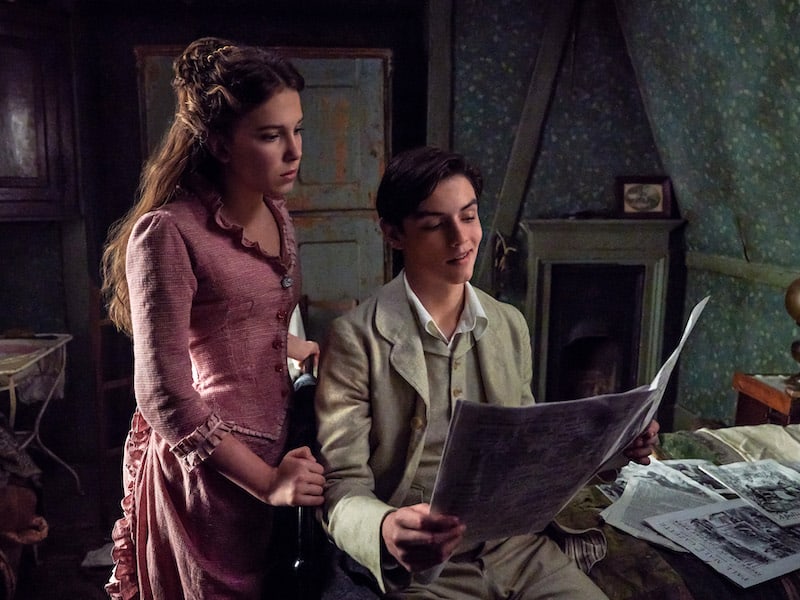Movie: Enola Holmes (2020)
From Producer: Mary Parent
Director: Harry Bradbeer
This movie released very recently on Netflix and grabbed my attention as I browsed through the platform for something to watch. I have always been a big fan of the Sherlock Holmes books and television series, so a mystery movie centered around the younger sister seemed like the perfect choice. The main character, Enola Holmes, is the same age as me, so I could relate to her well, and felt sympathy for her situation. It shocked me to watch this movie, and recognize so
many camera angles that we've recently learned about in AICE Media.
The first angle which stood out to me in the movie, was an extreme long shot. This shot was soothing to watch and influenced a calm feeling as I watched this part of the movie. I would also consider this an establishing shot, because it gave me a clear picture of the setting in which the story took place. The establishing/ extreme long shot allowed me to appreciate the beauty of the English countryside, and the setting which the story took place in. In Different Camera Angles Create Different Emotions, the article discusses how aerial views are unnatural, yet they can elicit a "godlike" emotion in the viewer. As the aerial shot, slowly got closer to the train, it felt as if I was seeing the train from a "bird's eye view," flying in a way that I realistically never could.

This angle was an over-the-shoulder shot, which could also be considered a point of view shot. Although, it did not evoke any particular emotions, it allowed me to see the women's suffrage pamphlets, which Enola found in this scene, from her point of view, or from directly over her shoulder. As discussed
Different Camera Angles Create Different Emotions, the over the shoulder shot made me feel closer to the main character and her point of view.
This angle was an example of a very dramatic eye level shot. Enola stares directly into the camera here, while blood was splattered across her face, and she thought that her closest friend had just died. This angle was definitely successful in evoking the emotions that Enola must've felt in this moment of the movie. The film-maker was able to shoot this shot at eye level, because the scene was dramatic enough without being shot from above.
This shot is another over the shoulder shot, directly after the one above, but from the perspective of the antagonist. This is right after the mystery was solved, and the grandmother was revealed to be the true source of evil in the plot. While being a major shock, the over the shoulder shot provided a great view of the protagonists recovering from the blow. This set a great perspective to the scene and the shock that it elicited.
This next shot was a two shot, from previously in the movie. I included it after the climax, to see a conversation between Enola and the grandmother, before the audience or Enola knew the truth. In the middle of the film, and especially after seeing this scene of conversation, I was convinced that the grandmother cared most about her grandson who was under attack. The two shot gave me a sense of security in the relationship between Enola and the grandmother, which I believe is exactly what the producer aimed for. It made the ending, much more shocking.

This was the last shot of the movie, before the credits rolled. I loved this view of inner city London, and how it encapsulated the ending of the movie. This was another bird's eye view which began at eye level with Enola, but zoomed out as it rose upwards, to reflect the big world of London that she was finally ready to embrace. This shot left me satisfied with the ending, and put a smile on my face. It was a great way to end the movie, and close-up Enola's journey.







Comments
Post a Comment